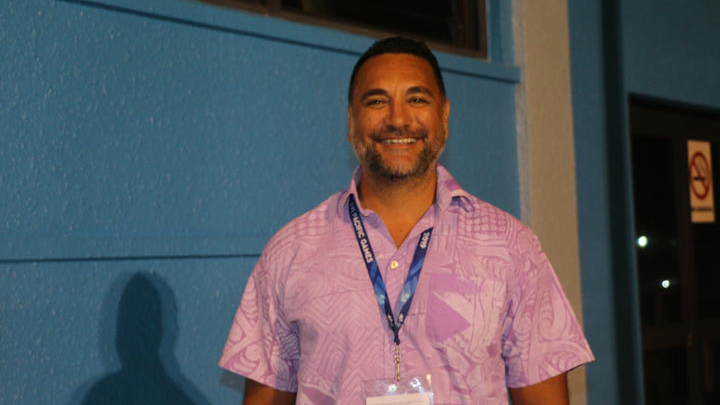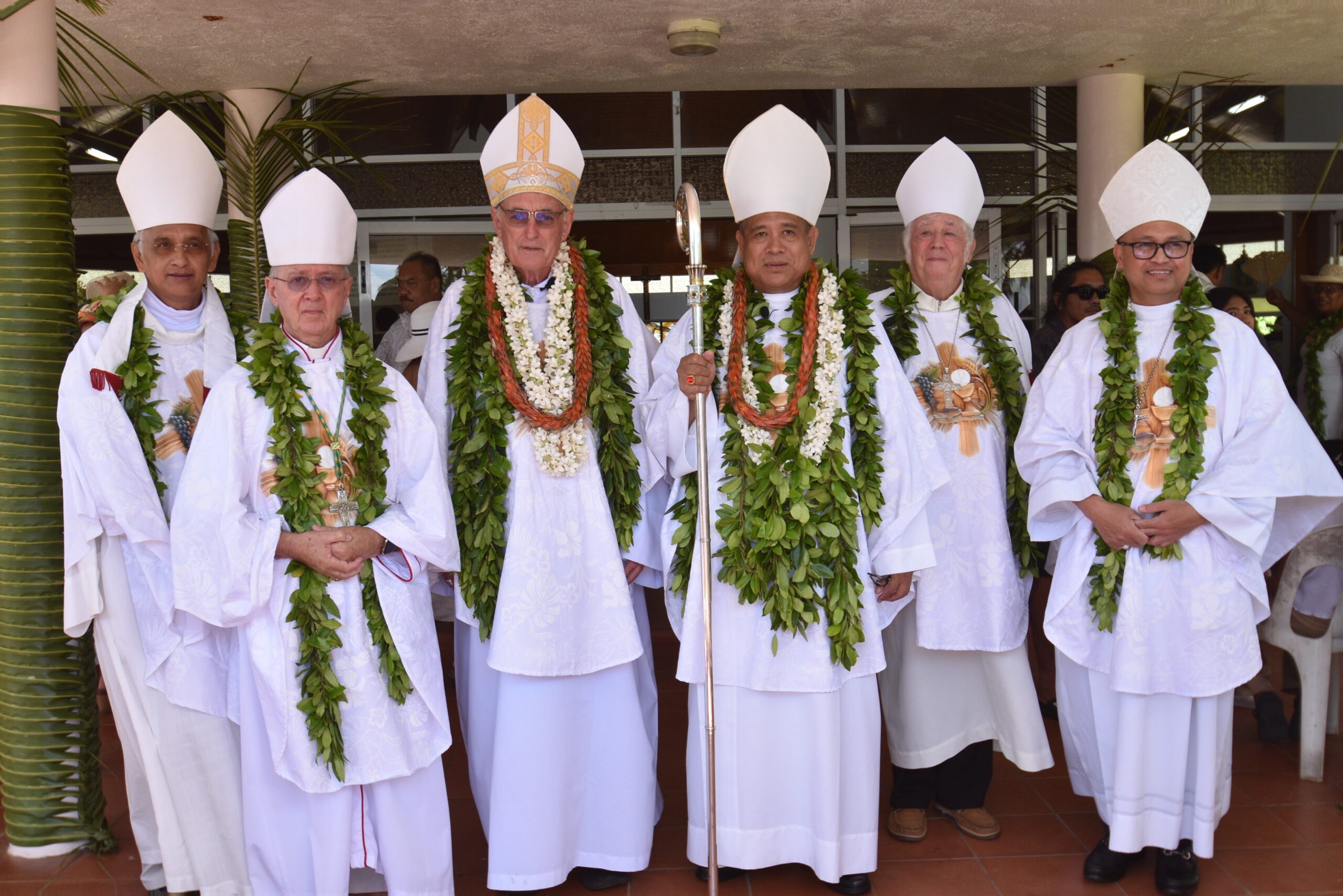The importance of local knowledge in award winning project
Monday 19 September 2022 | Written by Supplied | Published in Environment, Local, National

The first-ever town plan for Avarua – the capital of the Cook Islands – has won an International Federation of Landscape Architects (IFLA) award for its response to the climate crisis at a Gala Awards Ceremony in South Korea recently. The Coconet TV spoke to Cook Island architect Romani Katoa on how he became involved, why it’s important for local Pacific Islanders to work on these kinds of projects, how he got into architecture and more in a quick Q&A below.
The first-ever town plan for Avarua – the capital of the Cook Islands – has won an International Federation of Landscape Architects (IFLA) award for its response to the climate crisis at a Gala Awards Ceremony in South Korea recently. The Coconet TV spoke to Cook Island architect Romani Katoa on how he became involved, why it’s important for local Pacific Islanders to work on these kinds of projects, how he got into architecture and more in a quick Q&A below.
The honour was awarded to Auckland/Wānaka based practise Reset Urban Design in association with traffic engineers Stantec and Rarotonga based architect Romani Katoa. It was one of two prizes presented to Reset Urban Design.
Te Tau Papa o Avarua - The Avarua Town Plan, which was praised by judges for its climate change mitigation and positive contribution to the wider Cook Islands community, was commissioned by the Cook Islands Investment Corporation (CIIC) - a wholly owned subsidiary of the Cook Islands Government and controls the country’s property and public works.
The second IFLA award presented to Reset Urban Design who again worked with local architect Katoa on the project, was for the development of Aitutaki’s first-ever spatial plan: Te Papa Tau o Araura.
Together with Reset Urban Design you’ve won awards for your town plan for Avarua and island plan for Aitutaki. How did the opportunity come up to work with them on this project?
CIIC advertised for a request for proposal and we put in a bid proposal with Reset Urban Design and Stantec NZ (global engineering company). We started with the Avarua Masterplan and then continued onto the Aitutaki Plan. We also did some work on the Nikao Social Centre Plan, which includes planning of the coastal beach area and saltwater swimming pool. Nikao is the sporting hub of Rarotonga and the Cook Islands.
The awards specifically are for the plans response to the climate crisis. Why is it important for local islanders to be involved in this especially when dealing with climate change?
Pacific Islanders have been dealing with climate change ever since we entered the Pacific Ocean thousands of years ago. The discovery of every speck of land across the largest Ocean in the world can partly be attributed to responses to climate change. There is much traditional and indigenous knowledge across Cook Islands and the Pacific that is still in our DNA and directly connected with the ocean, the land, and the sky. Pacific people are some of the most resilient and adaptive to climate change and this is reflected in the way we live day in and day out.
However, we are on the precipice of not only losing lands to sea-level rise, but also generational traditional paternal/maternal knowledge on adaptation to environmental changes and conditions. Conforming to Western climate change policies, (Islanders don’t have a word for “policy”) have depleted local efforts and in some respects, undermine foundational systems already set in place by our ancestors, especially with preservation, conservation and adaptation. We are fortunate that the majority of our outer islands in the Cook Islands retain much of this knowledge. That is why it is so important.
Have you designed anything to this scale before and what was the experience like working on both of these projects?
I have worked on several projects of various scales throughout the Cook Islands over the last 23 years in some of the most isolated communities in the Pacific. From coastal protection to cyclone management centres, the projects in the outer islands is where my passion lies and are my favourite projects, because you are directly challenged with designing and working with nature on a “copra budget” for survival – not for looks or profit. Growing up in this environment, has directly affected my approach to climate change design whether in crisis (reactive) or passive (long term) Whether you are from the Southern Group or the Northern Group, we are still “iti tangata” (the people) surviving in 2 million square kilometres of ocean living in paradise.
Working with Reset Urban Design and Stantec has been a great working partnership with great synergies. We all understood the brief and the context of what was expected. We had over 35 consultations on Rarotonga and 10 in Aitutaki which included the Aronga Mana (High Chiefs), government agencies, private sector, tourism, chamber of commerce and local village communities. What was clear from the beginning, was from the outset - the plans had to be for Cook Islanders and not just for tourists.
There are not too many Pacific Island architects around, what made you want to go down this career path and what have been some of your favourite projects you've worked on so far?
My Papa and Uncle said go do something more than using a hammer and get into engineering or architecture. I was pearl diving at the time in Manihiki. I have recently been accepted into the Masters programme at AUT to research and study the direct relationships between Cook Islands Maori architecture and New Zealand Maori architecture. Unfortunately, there is minimal anthropological and archaeological information on vernacular architecture or buildings across the Cooks. Much has been lost or morphed into some colonised adapted version to the environment.
It has been difficult to find any information on indigenous architecture here in the Cooks. Luckily, the Northern Group has retained much of this information, and hope include these findings in the research and establish which village in Rarotonga or Pukapuka built the first “are moe”, “wale moe”, “fare moe” in Aotearoa. We are only scratching the surface in indigenous Maori/Maoli/Maohi design. Across, the Pacific, we still retain mana and it cannot be copied – nd it is exciting.
Also, I was getting tired of seeing foreign designed buildings getting blown away during a cyclone…lol
Apart from my passion projects in the outer islands, another favourite project of mine was the Are Tapaeanga, a small public toilet designed in the circular shape at Avatiu wharf. It references our traditional wind names across the Northern and Southern Group
What advice would you give to young Pacific Islanders wanting to get into this type of career and what are the training pathways they would need to go down?
Our people need to remember that by our very own DNA, we are master architects, engineers, planners builders, carvers, taunga’s and guardians of the land, air and sea. Whether in agriculture and resource management, we are heeding, observant and in tune with the sun, moon, wind and stars. We are naturally, a spiritual people long connected with our environment. We need to embrace this more whether we live in NZ or Australia. And it is imperative that the next generation of Pacific Island designers, architects, engineers, master planners understand this. Otherwise it will be lost and we will continue to study the architectural ruins and archaeological sites of Europe and not the Pacific.








































